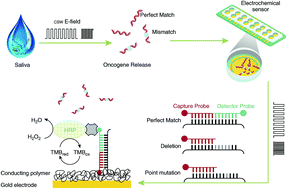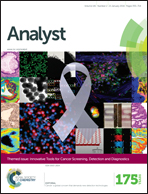Liquid biopsy for detection of actionable oncogenic mutations in human cancers and electric field induced release and measurement liquid biopsy (eLB)
Abstract
Oncogenic activations by mutations in key cancer genes such as EGFR and KRAS are frequently associated with human cancers. Molecular targeting of specific oncogenic mutations in human cancer is a major therapeutic inroad for anti-cancer drug therapy. In addition, progressive developments of oncogene mutations lead to drug resistance. Therefore, the ability to detect and continuously monitor key actionable oncogenic mutations is important to guide the use of targeted molecular therapies to improve long-term clinical outcomes in cancer patients. Current oncogenic mutation detection is based on direct sampling of cancer tissue by surgical resection or biopsy. Oncogenic mutations were recently shown to be detectable in circulating bodily fluids of cancer patients. This field of investigation, termed liquid biopsy, permits a less invasive means of assessing the oncogenic mutation profile of a patient. This paper will review the analytical strategies used to assess oncogenic mutations from biofluid samples. Clinical applications will also be discussed.

- This article is part of the themed collection: Innovative Tools for Cancer Screening, Detection and Diagnostics

 Please wait while we load your content...
Please wait while we load your content...